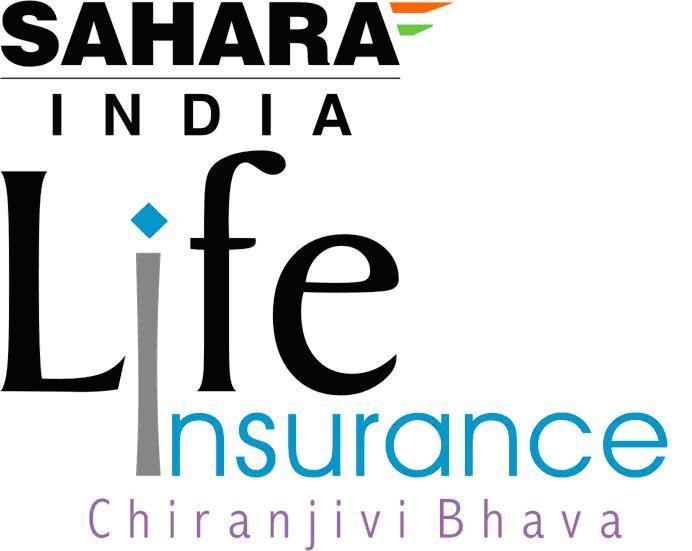Post Office Scheme for Boy Child - A Complete Guide
In India, securing a child's financial future is a top priority for most parents. Recognising this, the Indian Postal Service offers various schemes tailored for children's financial security and growth. In this blog, we will delve into one such scheme specifically designed for the boy child. Whether you are planning for your child's education or marriage, or simply looking to start a savings habit early, understanding the Post Office Scheme for Boy Child is vital.
Table of Contents
What is a Post Office Scheme for a Boy Child?
The Post Office Scheme for Boy Child in India is a savings initiative designed to provide a secure and stable financial foundation for the male child. These schemes, offered through the vast network of post offices across the country, are tailored to meet the unique financial needs of a growing boy, helping parents and guardians to accumulate funds for their child's future needs, such as education or setting up a business.
These schemes typically include options like the 'Ponmagan Podhuvaippu Nidhi' and the 'Sukanya Samriddhi Yojana', which although primarily targeted at the girl child, can be utilised for boys under certain conditions. The former is a specific scheme aimed at the male child, offering attractive interest rates and tax benefits. The key features of these schemes often include:
- Long-term Savings: Designed to encourage long-term savings habits, ensuring that there's a substantial fund available when the boy reaches adulthood.
- Attractive Interest Rates: Offering higher interest rates compared to regular savings accounts, ensuring that your savings grow at a steady pace.
- Tax Benefits: Contributions made to these schemes are often eligible for tax benefits under various sections of the Income Tax Act, making them a tax-efficient investment option.
- Minimum and Maximum Investment Limits: These schemes usually have defined minimum and maximum annual investment limits, making them accessible and flexible for different financial capabilities.
- Maturity and Withdrawal Terms: The maturity terms are typically aligned with the child reaching adulthood, with provisions for premature withdrawal under specific conditions.
The Post Office Schemes for Boy Child are designed with the objective of promoting savings and financial planning for a child's future. They offer a mix of safety, returns, and tax advantages, backed by the trust and accessibility of the postal system in India. These schemes are particularly appealing to those who prefer low-risk, government-backed savings instruments for their child's future.
What are the Best Post Office Savings in India for Boy Child?
The Indian Postal Service offers several savings schemes that, while not exclusively designed for the boy child, can be effectively used for securing their financial future. These schemes are known for their safety, reliability, and attractive interest rates. Let's explore some of the best post office savings options in India that parents and guardians can consider for their boy child:
Public Provident Fund (PPF):
The Public Provident Fund (PPF) is a savings-cum-tax-saving instrument in India, introduced by the National Savings Institute of the Ministry of Finance in 1968. It's a popular investment option for many reasons, such as:
- Features: PPF is a popular long-term savings scheme that offers tax-free returns and is ideal for securing a child's future, be it education or other needs.
- Interest Rate: Offers an attractive interest rate, compounded annually.
- Tax Benefits: Contributions are eligible for tax deductions under Section 80C of the Income Tax Act.
- Maturity Period: The maturity period is 15 years, extendable in blocks of 5 years.
Sukanya Samriddhi Yojana (SSY):
- Features: Although primarily for the girl child, families with a boy child can also invest in this scheme under certain conditions, such as in a family with twin girls and a boy. It offers one of the highest interest rates among small savings schemes.
- Interest Rate: The rate is set by the Government and is usually higher than most other savings schemes.
- Tax Benefits: Offers tax benefits under Section 80C.
- Maturity Period: The account matures in 21 years from the date of opening.
National Savings Certificate (NSC):
- Features: NSC is a fixed-income investment scheme that can be used to build a savings corpus for the boy child.
- Interest Rate: Offers a fixed interest rate, compounded annually but payable at maturity.
- Tax Benefits: Investments qualify for tax deduction under Section 80C.
- Maturity Period: 5 years.
Senior Citizen Savings Scheme (SCSS):
- Features: While designed for senior citizens, grandparents can open an account in their name for the benefit of their grandchild.
- Interest Rate: SCSS offers a higher interest rate compared to regular savings schemes.
- Maturity Period: The tenure is 5 years, extendable by 3 years.
Kisan Vikas Patra (KVP):
- Features: A saving certificate scheme where the amount invested doubles over the maturity period.
- Maturity Period: The maturity period is approximately 10 years and 4 months, but it can vary slightly depending on the prevailing interest rates.
Post Office Savings Account:
- Features: A basic savings account that can be opened in the name of a minor. It's a good way to start saving for a child's future needs.
- Interest Rate: Offers a standard interest rate, lower than other investment schemes, but provides liquidity.
Post Office Time Deposit (TD):
- Features: Similar to fixed deposits, offering the flexibility to choose the tenure of investment.
- Interest Rate: Varies based on the tenure of the deposit.
- Maturity Period: Tenure options range from 1 year to 5 years.
Post Office Monthly Income Scheme (POMIS):
- Features: Suitable for those seeking a regular monthly income, possibly for child support expenses.
- Interest Rate: Fixed interest rate with monthly income payout.
- Maturity Period: 5 years.
Ponmagan Podhuvaippu Nidhi Scheme:
- Features: Specifically designed for the benefit of the male child, this scheme aims to provide financial security and support for the boy child's future needs, such as education or starting a business.
- Interest Rate: The scheme usually offers a competitive interest rate, which is compounded annually.
- Tax Benefits: Investments in the Ponmagan Podhuvaippu Nidhi scheme may be eligible for tax deductions, enhancing its appeal as a savings instrument.
- Maturity Period: The scheme typically has a fixed maturity period, offering long-term savings prospects for the child's future.
Each of these schemes comes with its own set of features, benefits, and limitations. When choosing a scheme, consider the child's future needs, the time horizon for investment, risk appetite, and liquidity requirements. It's always advisable to diversify the investments to balance the risk and returns according to the child's future needs. Consulting with a financial advisor to tailor the investment plan to your specific requirements can also be beneficial.
How To Choose The Right Post Office Savings Scheme For A Boy Child?
Selecting the appropriate Post Office savings scheme for a boy child in India involves careful consideration of various factors. It's crucial to align the choice of scheme with the child's future needs, your financial goals, and the family’s overall financial situation. Here are some key points to guide you in making the right choice:
- Identify Your Financial Goals: Determine what you're saving for – whether it's the child’s education, marriage, starting a business, or general financial security. Different schemes are better suited to different goals.
- Consider the Time Horizon: Look at how long you can invest the money. For long-term goals, schemes with a longer maturity period like PPF or NSC might be more suitable. For shorter-term needs, a Post Office Time Deposit or Savings Account may be more appropriate.
- Assess the Risk Factor: Understand your risk appetite. If you prefer a risk-free or low-risk investment, opt for traditional savings schemes like the PPF or NSC. If you can handle moderate risk for potentially higher returns, consider options like KVP.
- Review the Interest Rates: Compare the interest rates of various schemes. Higher interest rates typically offer greater growth potential for your investment, but they may come with longer lock-in periods.
- Understand the Tax Implications: Consider the tax benefits associated with each scheme. Schemes like PPF offer tax deductions on contributions under Section 80C of the Income Tax Act, and the interest earned is tax-free.
- Liquidity Needs: Evaluate the need for liquidity. Some schemes allow partial withdrawals or loans against the deposit, providing financial flexibility in case of emergencies.
- Check Maturity Terms: Understand the maturity terms of the scheme. It's important to know when you will be able to access the funds and whether it aligns with the timing of your child's financial needs.
- Inflation Impact: Consider the impact of inflation on your savings. Ensure that the scheme you choose offers returns that can potentially beat inflation over the long term, preserving the purchasing power of your savings.
- Scheme Specifics and Limitations: Each scheme has its specifics and limitations. For example, the Ponmagan Podhuvaippu Nidhi Scheme is specifically tailored for boys, while the Sukanya Samriddhi Yojana has certain conditions under which it can be used for a boy.
- Ease of Operation: Consider the ease of operation and accessibility of the scheme. Opt for schemes that are convenient to manage, especially if you plan to make regular contributions.
- Consult Financial Advisor: If in doubt, it's always a good idea to consult with a relationship manager. They can provide personalized advice based on your financial situation and goals.
Choosing the right Post Office savings scheme for a boy child is a decision that requires thoughtful consideration. By analyzing your financial goals, understanding each scheme's features, and considering the child’s future needs, you can make a choice that not only secures your child's financial future but also aligns with your overall financial planning.
Conclusion
Researching the options for the best Post Office savings scheme for a boy child in India requires a careful balance of understanding your financial goals, assessing risk tolerance, and considering the future needs of the child. With a variety of schemes offering different benefits, such as attractive interest rates, tax advantages, and long-term growth, the Indian Postal Service provides reliable and secure options for parents and guardians looking to build a financial foundation for their boy child.
FAQs
- What is the Ponmagan Podhuvaippu Nidhi Scheme?
Ponmagan Podhuvaippu Nidhi is a savings scheme offered by the Indian Postal Service, specifically designed for the financial benefit of the male child, focusing on long-term savings with attractive interest rates.
- Can I use the Sukanya Samriddhi Yojana for a boy child?
While primarily for the girl child, families with a boy child can also invest in this scheme under certain conditions, such as in a family with twin girls and a boy.
- What is the maturity period of the Public Provident Fund (PPF) when used for a boy child?
The maturity period of PPF is 15 years, extendable in blocks of 5 years.
- Are there tax benefits associated with these Post Office schemes?
Yes, schemes like PPF and NSC offer tax benefits under Section 80C of the Income Tax Act.
- Can I withdraw funds from these schemes before maturity for my child’s education?
Some schemes like PPF allow partial withdrawals under specific conditions. However, the terms vary for each scheme.
- What is the interest rate for the Kisan Vikas Patra (KVP)?
The interest rate for KVP varies and is set by the government. The amount invested doubles over the maturity period, which is approximately 10 years and 4 months.
- How can the Senior Citizen Savings Scheme (SCSS) be used for a boy child?
Grandparents can open an SCSS account and use it for the benefit of their grandchild, although the account is in the grandparent's name.
- Is it possible to open a Post Office Savings Account for a minor?
Yes, a basic Post Office Savings Account can be opened in the name of a minor, which is a good way to start saving for the child's future.
- What are the minimum and maximum investment limits in these schemes?
The investment limits vary for each scheme. For example, PPF has a minimum yearly investment requirement of Rs. 500 and a maximum of Rs. 1.5 lakh.
- How do I choose the best Post Office scheme for my boy child?
Consider factors like your financial goals, the child's future needs, risk appetite, the scheme's interest rate, maturity period, tax benefits, and liquidity options. Consulting with a financial advisor is also advisable.




























